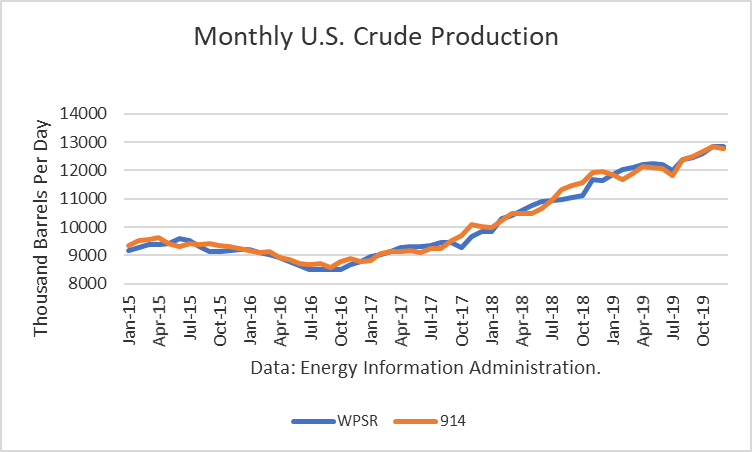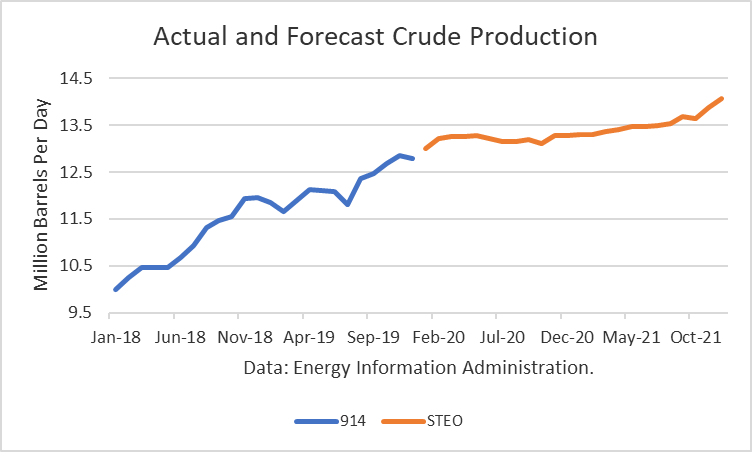The Energy Information Administration reported that December crude oil production averaged 12.779 million barrels per day (mmbd), down 84,000 b/d from November. Reductions occurred in the Gulf of Mexico (47,000 b/d), North Dakota (40,000 b/d), Colorado (26,000 b/d) and Oklahoma (16,000 b/d) and were likely weather-related. Texas production rose by 32,000 b/d and reached a new high of 5.350 mmbd.
Phillips 66 Partner’s Gray Oak pipeline is expected to ship an additional 900,000 b/d in the Permian. It began shipments and is expected to be in full service by the end of the second quarter of 2020.

The gains from last December have amounted 816,000 b/d. And this number only includes crude oil. Other supplies (liquids) that are part of the petroleum supply add to that. For December, that additional gain is about 700,000 b/d.

The EIA-914 Petroleum Supply Monthly (PSM) figure was 79,000 b/d lower than the weekly data reported by EIA in the Weekly Petroleum Supply Report (WPSR), averaged over the month, of 12.858 mmbd.


The December figure was about 130,000 b/d lower than 12.910 mmbd estimate for that month in the February Short-Term Outlook. If the difference is due to weather, it would imply no need for a “rebenchmarking” to EIA’s model in future production levels at this time.
The EIA is projecting that 2020 production will exit the year at 13.290 mmbd. And for 2021, it projects an exit at 14.07 mmbd.

Conclusions
The year-over-year growth in crude oil production has slowed, and the EIA is projecting slow growth during 2020. However, NGLs and renewables added almost as much growth in 2019, bringing total liquids growth to 1.5 million barrels per day, a figure that is often overlooked. With U.S. crude production at 13.0 million barrels per day, the U.S. has become a net exporter of petroleum.
Check back to see my next post!
Best,
Robert Boslego
INO.com Contributor - Energies
Disclosure: This contributor does not own any stocks mentioned in this article. This article is the opinion of the contributor themselves. The above is a matter of opinion provided for general information purposes only and is not intended as investment advice. This contributor is not receiving compensation (other than from INO.com) for their opinion.
